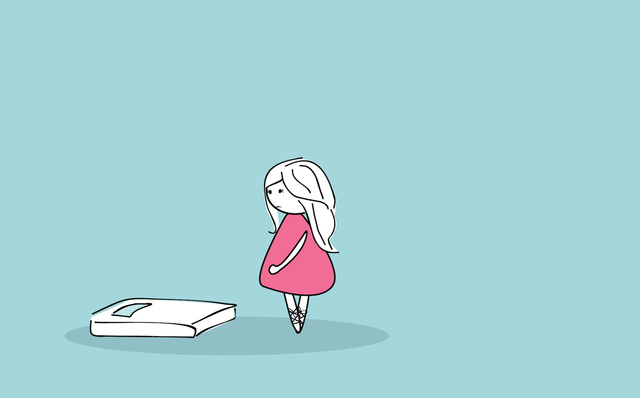Featured Article:Treating Bulimia Nervosa with Cognitive-Behavioral Therapy and Interpersonal Psychotherapy
By
2015, Vol. 7 No. 02 | pg. 1/3 | »
IN THIS ARTICLE
AbstractBulimia nervosa represents a significant source of morbidity among young women. This review compares cognitive-behavioral therapy (CBT) and interpersonal psychotherapy (IPT) for the treatment of bulimia nervosa in young women. CBT has been established as the most effective treatment for bulimia nervosa. However, research has shown that focal interpersonal psychotherapy (IPT) may provide a comparable alternative. A major comparative multisite study found that at the end of treatment, IPT was less effective than CBT, but during follow-up the difference between the two treatments disappeared due to continuing improvement among the patients who received IPT (Agras et al., 2000). Hence, although IPT appears to be as effective as CBT in the treatment of bulimia nervosa, it may take longer to produce equivalent clinical change in patients. Bulimia nervosa represents a significant source of morbidity and mortality in young women. According to the 4th edition of the Diagnostic and Statistical Manual of Mental Disorders, the diagnostic criteria for bulimia nervosa include recurrent episodes of binge eating in which the person consumes an objectively large quantity of food accompanied by a sense of loss of control over eating. 
Eating disorders such as Bulimia Nervosa affect as many as 24 millions men and women in the United States. Meanwhile, the mortality rate of those with eating disorders is higher than those with other mental illnesses (National Association of Anorexia Nervosa and Related Disorders). It is also common for the individual to experience recurrent inappropriate compensatory behaviors in order to prevent weight gain, such as self-induced vomiting, misuse of laxatives, diuretics, enemas, or other medications; fasting, or excessive exercise. Furthermore, the binge eating and inappropriate compensatory behaviors must occur, on average, at least twice a week for three months and self-evaluation is unduly influenced by body shape and weight (DSM-1V; American Psychiatric Association, 1994). A review of the literature suggests that approximately 90% of persons diagnosed with bulimia nervosa are women. In fact, the lifetime prevalence of bulimia nervosa in adult women has been estimated as 1.1%–2.8% in 3 large population based surveys conducted in New Zealand (Bushnell et al., 1990), the United States (Kendler et al., 1991), and Canada (Garfinkel et al., 1995). Therefore, the diagnosis and treatment of bulimia nervosa in young women is important because the condition represents a major source of physical and psychiatric morbidity for this population. Serious medical complications of bulimia nervosa are not uncommon, and patients may suffer from dental erosion, swollen salivary glands, oral and hand trauma, gastrointestinal irritation and electrolyte imbalances (especially of potassium, calcium, sodium and hydrogen chloride) (Mitchell & Crow, 2006). In addition to physical complications, patients may experience a host of negative psychological problems and significant reductions in quality of life. Furthermore, bulimia nervosa is frequently associated with other conditions such as substance abuse, obsessive- compulsive disorder and depression, which may further compromise diagnosis and treatment (O’Brien & Vincent, 2003). Several different therapy modalities exist for the treatment of bulimia nervosa including pharmacotherapy (Zu & Walsh, 2002), interpersonal psychotherapy (Fairburn & Jones, 1993), dialectical behavior therapy (Chen et al., 2008) and cognitive-behavioral therapy (Wilson & Fairburn, 1998). This research paper will focus on two treatment modalities-cognitive behavioral therapy (CBT) and interpersonal psychotherapy (IPT) in the treatment of bulimia nervosa in young women. Although cognitive-behavioral therapy appears to be the treatment of choice for bulimia nervosa, research suggests that interpersonal psychotherapy could be a comparable alternative, especially with regard to long-term outcome. Cognitive Behavioral Therapy as a Mode of Treatment for Bulimia NervosaTreatment is based on the cognitive behavioral theory that emphasizes the critical role of both cognitive and behavioral factors in the maintenance of the eating disorder. The theory proposes that the characteristic attitudes and values that females attach to shape and weight are of primary importance in the maintenance of the disorder. Therefore, individuals with bulimia nervosa become preoccupied with their eating patterns, weight and shape. Consequently, these individuals actively pursue weight loss and dietary restraint while taking extreme measures to avoid weight gain. Binge eating occurs in response to these attempts to practice rigid dietary restrictions and is often associated with a loss of control over eating. Unhealthy recurrent compensatory behaviors such as purging, fasting and excessive exercising are used to prevent weight gain. Hence, purging helps maintain binge eating by reducing the patient's anxiety about potential weight gain. Furthermore, binge eating and purging exacerbate distress and lower self-esteem, which fosters the cycle that will inevitably lead to more dietary restraint and binge eating. According to this cognitive model, treatment for bulimia does not merely focus on the presenting behaviors of binge eating and purging but rather addresses the factors that are maintaining the condition. The treatment therefore uses a combination of cognitive and behavioral procedures to change patients’ behavior and their dysfunctional cognitions about weight and shape while replacing dietary restraint with more regular and healthy eating patterns (Fairburn, Marcus & Wilson, 1993). Treatment may also be structured to address negative self-evaluation, the emphasis placed on perfectionism and dichotomous thinking, as well as the ability to tolerate negative affect. Cognitive behavioral therapy for the treatment of bulimia nervosa has three overlapping phases. In the first phase, the primary goal is patient education about bulimia nervosa and the conditions that maintain the eating disorder. In addition, patients are encouraged to practice regular eating patterns and to resist the urge to binge eat and purge. The therapist and patient utilize detailed records of food intake, episodes of binge eating and purging as well as associated cognitions and emotions. In the second phase, techniques to reduce dietary restraint are further explored such as expanding the array of available food choices. In addition, an empirical approach is used to target and challenge dysfunctional beliefs and avoidance behaviors associated with concerns about eating, weight and shape. The third stage focuses on maintaining change after the treatment has ended. In this stage, relapse prevention procedures are used to prepare for potential setbacks with treatment. Evidence Supporting the Efficacy of Cognitive-Behavioral Therapy for the Treatment of Bulimia Nervosa in Young WomenCognitive- behavioral therapy as a treatment for bulimia nervosa has been extensively studied. The main findings that have been identified are as follows: a. CBT has significant beneficial effects on all aspects of the psychopathology of bulimia nervosa. A number of studies have demonstrated marked reductions in the frequency of binge eating and purging, decreased dietary restraint as well as improvement in attitudes about weight and shape. In addition, these primary outcomes are generally associated with a decrease in the level of general psychiatric symptoms and improvements in self esteem and social functioning. Research by Craighead and Agras (1991) based on 10 controlled trials report a mean reduction in the frequency of purging of 79% with 57% of patients being abstinent (Craighead & Agras, 1991). In addition, controlled outcome studies by Wilson and Fairburn (2002) suggest that approximately 30 to 50% of patients show abstinence from binge eating and purging at the end of treatment and overall reductions in binge eating and purging are 80% or more (Wilson & Fairburn, 2002). b. Follow-up studies report that the improvements in bulimic patients who have received CBT appear to be well maintained. Research suggests that the effects of cognitive- behavioral therapy in the treatment of bulimia nervosa are well maintained. A review of the literature indicates that therapeutic changes are well maintained over the six to twelve months following treatment. The longest follow-up of CBT (mean length of follow-up = 5.8 years) demonstrated that roughly two-thirds of patients showed no signs of binge eating or purging and most maintained substantial progress in measures of general psychiatric features and social functioning (Fairburn et al., 1995). These findings are significant given that the treatment period for this study was relatively brief (19 sessions over 18 weeks), as well as the chronic nature of the disorder at the beginning of treatment (the mean duration of disorder was approximately seven years). c. CBT has been found to be equal or superior to all the treatment modalities with which it has been compared. Antidepressant medication is another treatment for bulimia nervosa that has been empirically supported in studies comparing it to the pill placebo. CBT has been shown to be superior to antidepressant medication alone and combining the two treatments has produced few benefits over CBT in reducing the primary features of bulimia nervosa (Whittal, Agras & Gould, 1999). In addition, CBT has been shown to be more effective than several other psychological treatments, including supportive psychotherapy, supportive-expressive psychotherapy, stress management therapy, and dialectical behavior therapy (Wilson & Fairburn, 2002). The primary exception is interpersonal psychotherapy (IPT), which has been shown to have comparable effects to CBT (Fairburn et al., 1993; Agras et al., 2000).Continued on Next Page » Suggested Reading from Inquiries Journal
Inquiries Journal provides undergraduate and graduate students around the world a platform for the wide dissemination of academic work over a range of core disciplines. Representing the work of students from hundreds of institutions around the globe, Inquiries Journal's large database of academic articles is completely free. Learn more | Blog | Submit Latest in Psychology |
















